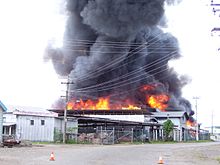Levuka Historical Port Town
The town, with its low-slung buildings nestled among coconut and mango trees along the beach, was Fiji's first colonial capital, ceded to Britain in 1874. It developed from the early 19th century as a centre of commercial activity for Americans and Europeans, who built warehouses, shops, port facilities, residences, and religious, educational and social institutions around villages of indigenous South Pacific islanders. It is a rare example of a late colonial port town whose development was influenced by the indigenous community, which consistently outnumbered European settlers. As such, the town is an outstanding example of a late 19th century Pacific port settlement, reflecting the integration of local architectural traditions by the supreme naval power, resulting in a unique landscape.









Poem of the heritage generated by AI
Intangible culture related to the heritage
China tourist attractions related to the heritage
World heritage related to the heritage
Information extracted from Wikidata
| capital of | Colonial Fiji |
| capital of | Kingdom of Fiji |
| country | Kolkata |
| image | http://commons.wikimedia.org/wiki/Special:FilePath/BeachStreetLevuka.jpg |
| executive body | Levuka |
| location of creation | Levuka |
| U.S. National Archives Identifier | 10038292 |
| official language | Colonial Fiji |
| official language | Kingdom of Fiji |
| number of rooms | lccn-no89000317 |
| office held by head of the organization | http://g.co/kg/m/06fyxj |
| Commons category | Levuka |
| coordinate location | Point(178.840127777 -17.684013888) |
| Commons gallery | Levuka |
| page banner | http://commons.wikimedia.org/wiki/Special:FilePath/Levuka%20banner%20Street.jpg |
| U.S. National Archives Identifier | 10038292 |